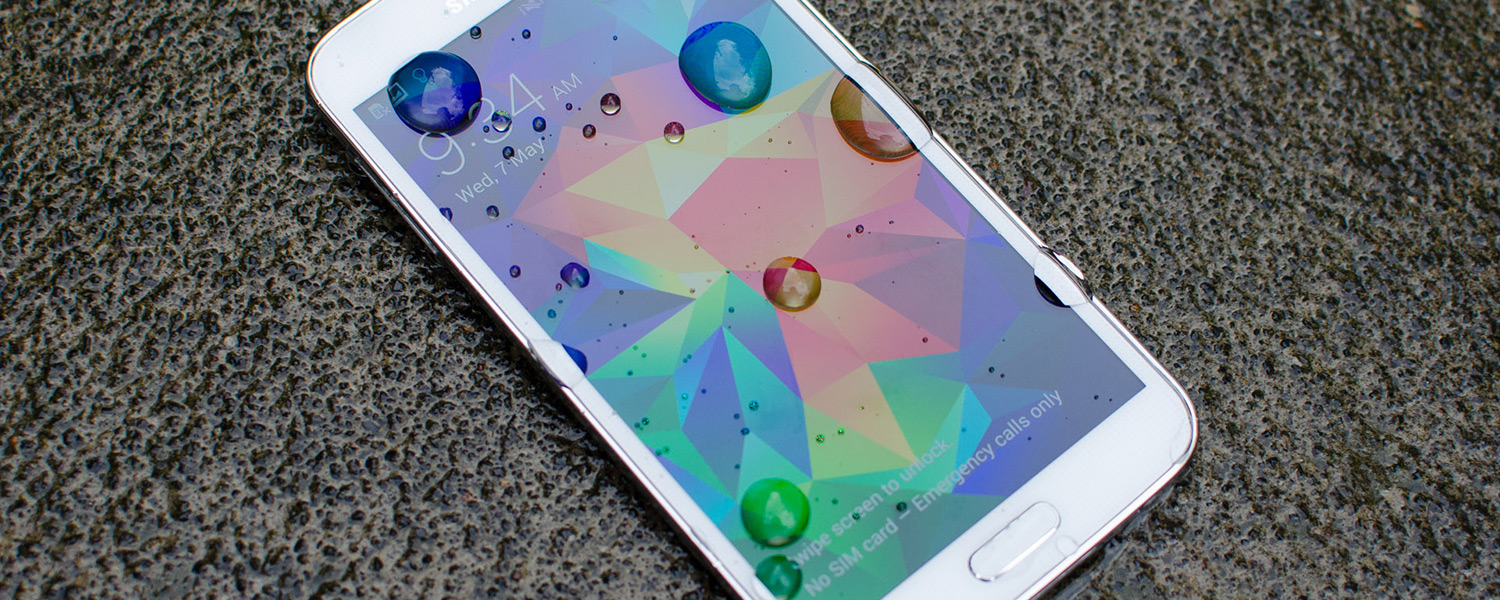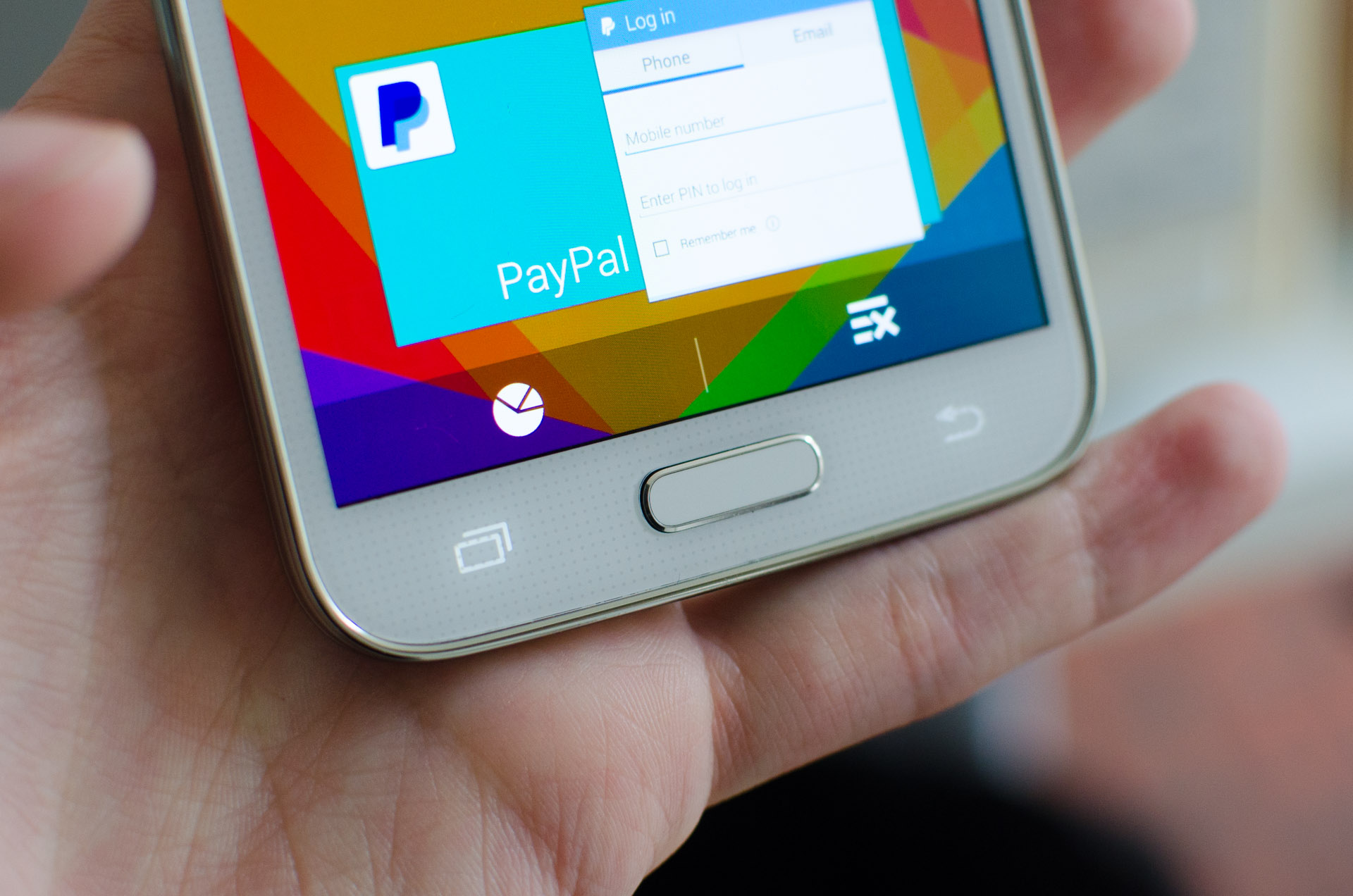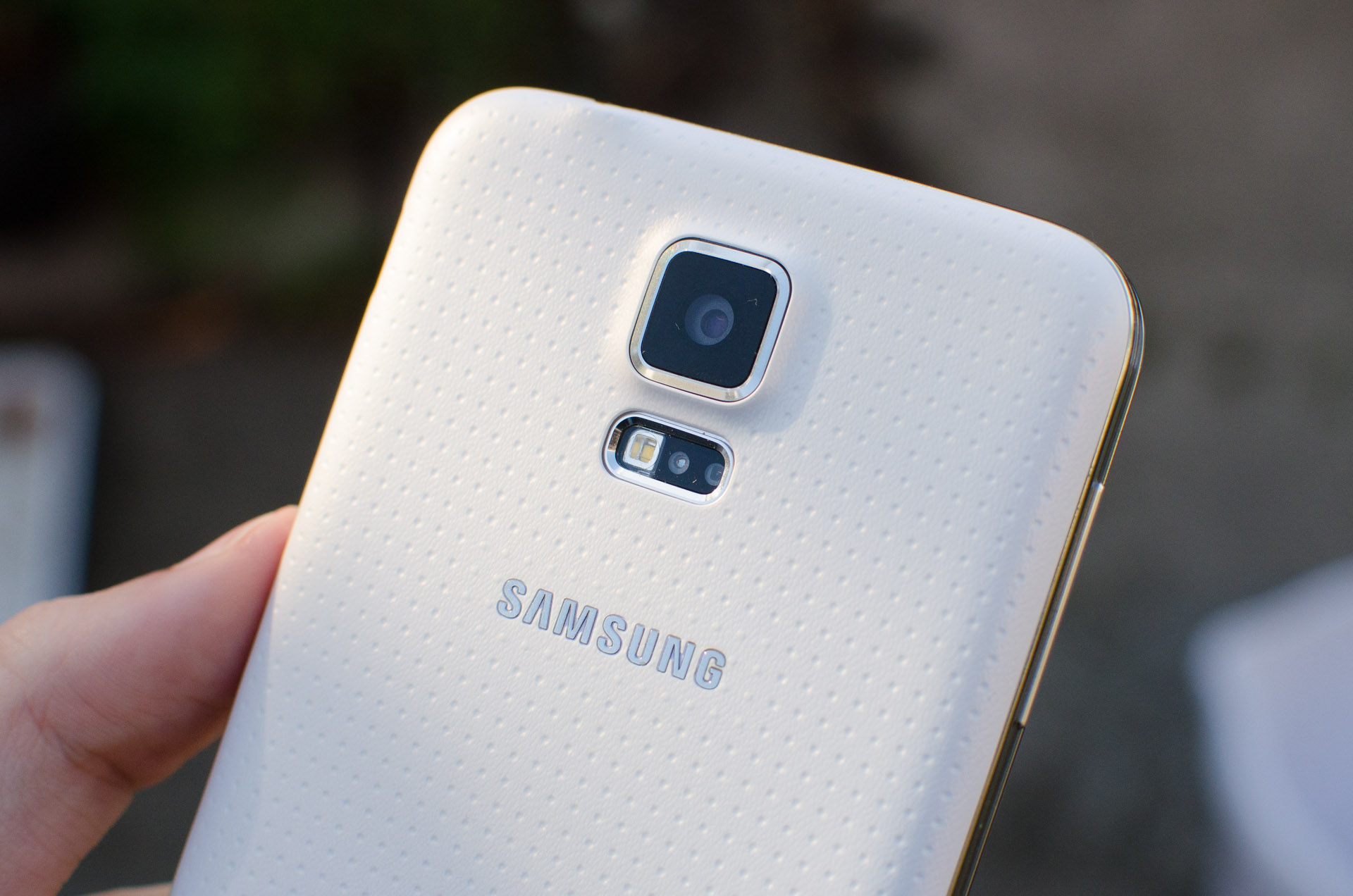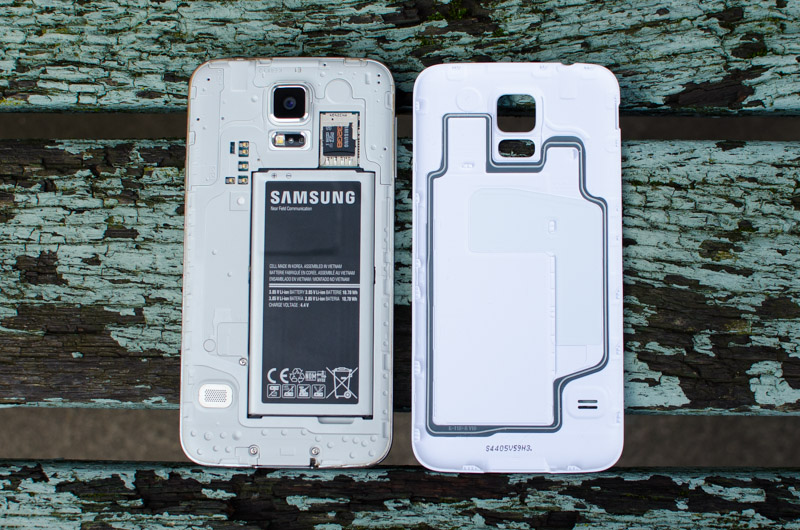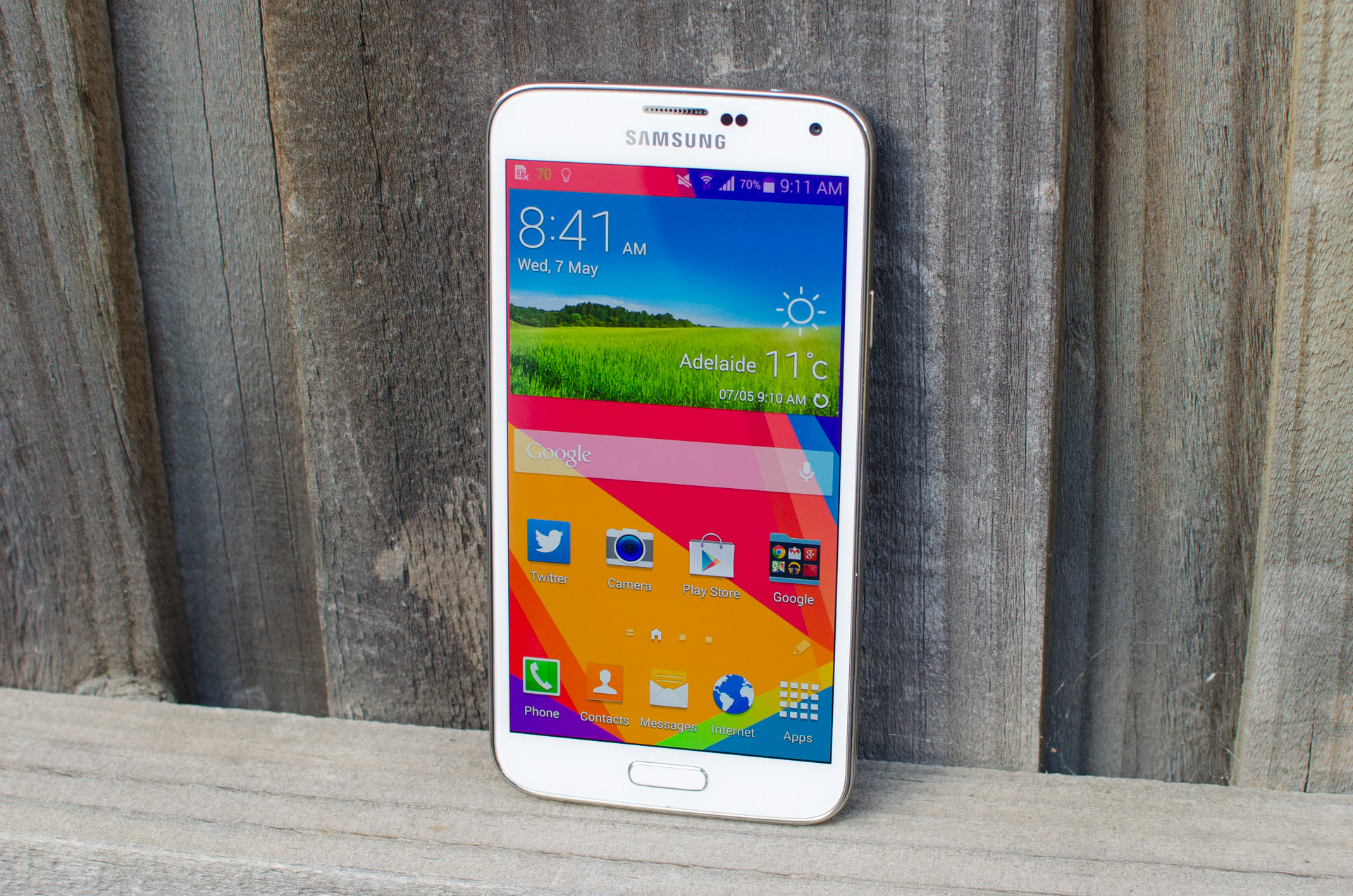Another year, another flagship Galaxy S device. Since the release of the original Galaxy S in 2010, Samsung has been routinely refining the formula through hardware upgrades, software polish and no shortage of gimmicks. We typically see larger displays, more cores, more megapixels, larger batteries and interesting new additions on every release and 2014's Galaxy S5 does little to break away from this formula.
On the hardware front, the Galaxy S5 provides an arguably smaller upgrade than we've seen with past releases. The Super AMOLED display has seen a slight bump to 5.1-inches, and still packs the same 1080p resolution we're used to. The Snapdragon 600 SoC of the Galaxy S4 is swapped out for the newer Snapdragon 801. A 16-megapixel camera is seen on the back, complete with 4K video recording. Nothing major, just continual improvements in all the key areas.
Samsung Galaxy S5
$99 with contract, $700 unlocked
- 5.1", 1920 x 1080 Super AMOLED display (432 ppi)
- Qualcomm Snapdragon 801 SoC
- 2.5 GHz quad-core CPU, Adreno 330 GPU, 2GB RAM
- 16/32 GB internal storage, microSD card slot
- 16 MP camera, 1/2.6" sensor, f/2.2 lens, 4K video
- IP67 water resistant
- Fingerprint scanner, heart rate monitor
- 2,800 mAh, 10.78 Wh battery
- LTE, Wi-Fi a/b/g/n/ac, Bluetooth 4.0, NFC
- Android 4.4 'KitKat'
- 145 grams, 8.1mm thick
But this wouldn't be a Samsung handset without a few additions. Following from the iPhone 5s' implementation, the S5 includes a fingerprint reader in the home button; and in keeping with Samsung's push into fitness, there's a heart rate sensor on the back. The entire device is also IP67 water resistant, making it tougher than ever.
There's no doubting that Samsung's massive marketing budget will make the Galaxy S5 very successful, but with increased pressure from HTC and their fantastic One M8, and the Sony Xperia Z2, Samsung is going to find it harder to have an absolute winner in the flagship Android space.
Design
Not much has changed, design-wise, between the Galaxy S III of 2012 and the Galaxy S5 of 2014. The plastic remains, the imitation metal remains, and typical Samsung elements like the protruding camera, physical home button and prominent sensor array, also remain. The back panel is removable and the display gets slightly larger with each release.
Click on any photo to enlarge
Where changes have been made, the changes are for the better. Samsung has finally listened to the complaints and has opted for a plastic rear housing that doesn't feel cheap, slippery and awful. The new Band-Aid-style texturing feels surprisingly nice, and gives the phone a touch of class where it hasn't had any in the past.
But it's still plastic, which up against the aluminium HTC One M8 and Apple iPhone 5s, or the glass Sony Xperia Z2, seems a little lacklustre. The fake metal rim around the Galaxy S5 does it no favors either, as it's blatantly plastic. With that said, I do like the all-glass front panel which looks reasonably good, especially when you power up the brilliant Super AMOLED display.
While it's not the best smartphone build going around, it's easily the best Galaxy S design so far. The Galaxy S5's body is very ergonomic, with the curves seemingly sculpted to match the human hand. It's not the slimmest phone ever released at 8.1mm thick, but it doesn't feel chunky to hold, nor heavy at 145 grams. The shift away from the smooth, glossy back panel also makes the handset easier to keep in your hands as it's considerably less slippery.
Next to the physical home button, which thanks to the fingerprint scanner has less travel than you'd expect, are the two capacitive soft buttons. Finally, the menu button has been canned after it was made a legacy feature in Android 4.0 way back in 2011. It's been replaced with the far more useful recent apps button, allowing quick multitasking and switching of apps.
The other button is the back button, which is on the opposite side to most Android handsets; not a huge deal, but you might be confused temporarily if you're coming from a non-Samsung device.
Around the edges, you'll find the volume rocker on the left-hand side, and the power button on the right, continuing Samsung's tradition of placing it in the most comfortable location. Unlike other recent smartphones like the Nokia Lumia 1520 and HTC One M8, you can't double tap the display to power on the device, but you do have the option of pressing the physical home button or the power button.
On the top edge is the 3.5mm headphone jack, plus the infrared LED which lets you control TVs, set-top boxes, home theatre systems and more. The bottom is where you'll find the micro-USB 3.0 port covered by a flap, which is something that hasn't been seen in a Galaxy device since the sliding cover over the original Galaxy S' USB port. It's quite annoying to have to constantly open the flap whenever you want to charge the device, but it's necessary for a new feature: water resistance.
The Galaxy S5 is Samsung's first major release that is water resistant, with the company deciding that producing a separate Active-branded model (like the Galaxy S4 Active) wasn't the ideal way to go. The S5 is IP67 rated, indicating it's dust tight and resistant to up to one meter of fresh water for 30 minutes. It's important to note that the Galaxy S5, like other water resistant smartphones, aren't immune to salt water; if you take the S5 into the sea, you might end up corroding and damaging internal components.
I'm not convinced that water resistance is a hugely important feature for a phone. Don't get me wrong, it's cool to have the ability to take underwater photographs and drop it in the bath without caring, but I rarely find myself in the situation where I'd like to use my phone in a wet environment. Plus, the capacitive touchscreen doesn't work properly when it's wet, so your use of the S5 in a pool or shower will be limited at best.
The back of the device sees the camera protrude slightly from the body (it's 9.7mm thick at this point), and below it is the all-new heart rate sensor in a cut-out alongside the LED flash. Further down you'll find the single rear speaker, and there's the usual range of branding.
Behind the Galaxy S5's back cover is the long and slim removable battery, plus the microSD card slot which is stacked on top of the microSIM slot. To the top left of the battery you can see a range of exposed pins, which are used for the Wireless Charging S-View Flip Cover, an optional accessory which is Qi-compatible.
With companies still charging a ridiculous sum for extra internal storage, Samsung included, I'm happy to see the inclusion of a microSD card. The removable battery is a slightly different story: very useful for a small percentage of users, but due to the extra housing necessary, it reduces the potential battery capacity. The S5's 2,800 mAh battery (10.78 Wh) is nothing to sneeze at, but Sony and LG have managed to pack 3,000 mAh (11.4 Wh) batteries in similar bodies.
One final feature I'd like to highlight is the cleverly hidden notification LED that you'll find in the top-left corner. The LED is large, multi-colored and bright, making it easy to see when you've got notifications to attend to. It sits near the in-call speaker, prominent speaker array and front-facing camera.
Throughout this review you'll see the "Shimmery White" model of the S5, but it's also available in "Charcoal Black", "Electric Blue" and "Copper Gold", all of which look just as good.
